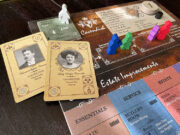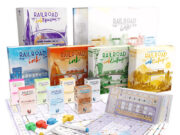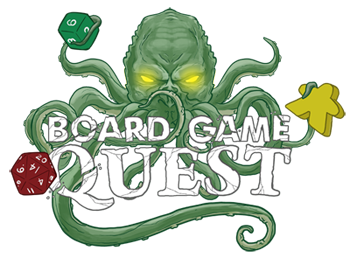The collectible/customizable card game (CCG) or trading card game was an invention of Richard Garfield in 1993 with Magic: The Gathering. Magic rapidly exploded, and stores could not keep it in stock. Other companies rapidly scrambled to cash in on the Magic phenomenon, leading to a plethora of CCGs.
While there continue to be new ones produced today (Lorcana and Star Wars: Unlimited being recent examples), the ’90s had CCGs everywhere you looked. There was the Mortal Kombat Kard Game, Vampire: The Eternal Struggle, SimCity (I kid you not), multiple Star Wars and Star Trek games, Pokémon, Babylon 5, a crossover system featuring Xena and Hercules, and more.
This was a glut of product, and much of it is not worth remembering. Some, however, survived for years, and others that ended prematurely still had inventive and entertaining game play. Lets hop in the DeLorean and head back to the 1990s to check them out…
Top 10 Classic CCGs
 10. Blood Wars
10. Blood Wars
Going to start this off with a controversial pick. Of all the games you expected to see on this list, Blood Wars—based on the Planescape D&D setting—was likely not among them. The listed player count for this one was 2-8, and starter decks were a pack of 2 decks. Despite this, it really was a game that wanted 4 players. In some ways, it was a game ahead of its time. Your goal was to conquer a certain value of battlefields, and you could achieve that goal both through combat and diplomacy, with all the Warlords having an “intrigue” score. It really had a political element to it that thrives in a multiplayer format. But it was long before multiplayer CCGs were the rage. Despite having the great Planescape art by incomparable Tony DiTerlizzi (all hail), it only lasted 3 expansions over approximately 6 months.
2-8 Players • Ages 12+ • 90 minutes
 9. Young Jedi: Collectible Card Game
9. Young Jedi: Collectible Card Game
Ah, Decipher. One of the companies that really put out some good CCGs to actually compete with Magic, rather than just clone it. The first of three games from Decipher on this list (spoilers) was actually the last to be released: Young Jedi. First released in 1999, based entirely on The Phantom Menace. The game was fairly simple as it was meant to have a younger target audience than its more complicated big brother (more on that later—again, spoilers). The forces manipulated by the Sith faced off against the forces of the Republic on the three planets featured in Episode I, one at a time, with the goal of winning on 2 out of the 3. The most fun part of the game was the battles themselves, when both players stack their characters face down and reveal them (and any weapons) one at a time. There was a degree of strategy in determining the most favorable order of battle, but the destiny draw (checking the top card of your deck for a number between 1 and 6 that was on all cards) added some additional spice to mess with your plans.
2 Players • Ages 8+ • 45 minutes
 8. Star Trek Customizable Card Game
8. Star Trek Customizable Card Game
I just said Decipher had multiple entries on this list; here is the second. This was one of the earliest efforts at a CCG after Magic. It is a game that lasted a while when others burned out because its core gameplay was different enough to justify its own existence. Many CCGs early on the question was “why would I play this when Magic already exists?” This was not a relevant question for Star Trek. The core gameplay involved completing missions and overcoming obstacles to score points, though combat (both personal and ship-to-ship) was also possible. It proved to be one of the longest-running non-Magic CCGs, releasing over 20 main sets and many ancillary products for over 13 years till its cancellation in 2007. World championships continue to be held today, and the gameplay has aged very well.
2 Players • Ages 10+ • 45 minutes
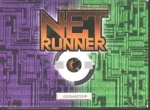 7. Netrunner
7. Netrunner
Netrunner has since been released in a revised edition, but my focus is the original Netrunner as released in 1996 by Wizards of the Coast. What set this CCG apart from its contemporaries was that it was an early effort at asymmetric gameplay, though not to the extent of more recent asymmetric games. One player was the Corporation, and one player was the Runner. There were certain similarities in their gameplay, but their goals were thematically contrary, with the Corporation player wanting to complete their Agenda, and the Runner wanting to steal elements of the Corporation’s Agenda by raiding data forts. The theme was interesting, and the gameplay was entertaining. It was brought back in later years as a living card game (Android: Netrunner), showing the enduring popularity of the original.
2 Players • Ages 10+ • 45 minutes
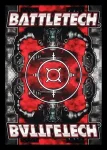 6. BattleTech TCG
6. BattleTech TCG
The incomparable Richard Garfield has made more than just Magic and Robo Rally. Another early TCG effort by His Garfieldness was a TCG adaptation of FASA’s BattleTech. The game clearly has some DNA from Magic (notably, it is one of the only other TCGs allowed to use the words “tap” and “untap”!), but it is its own game that really hits the flavor of the original game world. You deploy resources to construct and pay for cards, ultimately building your ‘mechs over several turns. In true BattleTech fashion, you can send your ‘mechs on missions to fight your opponent’s, with battles ensuing. The ultimate goal is to attack and deplete your opponent’s Stockpile (deck). The game had a major rules revision after only a couple of sets, which was ultimately what killed it, but it remains an interesting, somewhat complex game to play today.
2 Players • Ages 10+ • 20 minutes
2 Players • Ages 10+ • 20 minutes
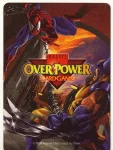 5. Overpower
5. Overpower
Before the Marvel Cinematic Universe made anyone who wasn’t a comic book nerd care about names like “Iron Man” and “Captain America,” there was OverPower. Like many of the games on this list, it was not a Magic clone, and tried to do its own thing, unlike many of its contemporaries. Each player has a team of 3 superheroes or villains (mix and match at your discretion!) and one reserve character. All the characters are rated in 3 stats— Energy, Fighting, and Strength (Intellect was added in later sets)—and have their own selection of Special cards. You can either win by knocking out all of your opponent’s characters or outplaying them and completing your 7-card Mission. (Each round, you “venture” a number of Mission cards based on how well you think the round will go with the hand you’ve drawn.) Later sets added DC and Image characters before support for the game ended in the late 90s. It recently had a successful Kickstarter to relaunch the game without the Marvel/DC branding, using IP-free characters like Zeus or Sherlock Holmes.
2 Players • Ages 10+ • 30 minutes
 4. Dragon Dice
4. Dragon Dice
When everyone and their mother was making CCGs to cash in on the Magic craze (including TSR), there were a few games that took the concept and applied it a bit differently. Rather than a Collectible CARD Game, Dragon Dice was the first (and one of the few) Collectible DICE Games. Set in a new fantasy world called Esfah, the game launched with 4 races, each a combination of two of the game’s five elements. Coral elves were water and air, dwarves were earth and fire, goblins were earth and death, and lava elves were fire and death. The elements were a key part of each race as they indicated which of the magic spells they could cast and also tied into terrain types where that race had a bonus. Within each race, there were a variety of magic users, cavalry, ranged, and melee divided between four different rarities (common, uncommon, rare, and d10 monsters). Each game consisted of three battlefields—represented by d8s—that you had to maneuver up and down to allow the use of either Magic, Ranged, or Melee as you preferred. The ultimate goal was to claim victory at 2 of the 3 battlefields. The game proved highly expandable, as the 5 elements could be combined into 10 different races, in addition to other types of dice such as magic items (d4s) and the fearsome dragons (d12s). After TSR was bought by Wizards of the Coast, Dragon Dice was bought by SFR which has published Dragon Dice to this day, releasing several new sets. Impossible though it may seem, Dragon Dice is still in print after 30 years!
2-4 Players • Ages 10+ • 30 minutes
 3. Legend of the Five Rings
3. Legend of the Five Rings
Often referred to as L5R, Legend of the Five Rings was a game with a long history. It was originally released in the 90s and continued for 20 years before finally succumbing to the fate of most of its contemporaries (though, like Netrunner, it was revived by Fantasy Flight as a living card game, albeit to a less stellar reception). There were many different factions, with some being added or removed for story reasons over the course of the game’s releases (releases had accompanying ongoing story released alongside them). It was a game that could be played with 2 players like most CCGs, but worked well with higher player counts. There were multiple paths to victory: either dominate your opponents militarily, achieve enlightenment of the five rings, or win through popular acclaim by accruing a high amount of honor. It had some of the most unique gameplay of any CCGs, and when combined with its theme and aesthetics, its easy to see why it endured for so long.
2-8 Players • Ages 12+ • 45 minutes
2-8 Players • Ages 12+ • 45 minutes
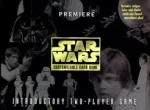 2. Star Wars Customizable Card Game
2. Star Wars Customizable Card Game
The only CCG to unseat Magic from the top selling spot back in the 90s (albeit briefly) comes in at #2 on the list, as it should. The Force was strong with Decipher when they made this one. Similar to BattleTech, victory is achieved by depleting your opponent’s deck, which in this case is the Force. What is unique about the game, though, is that your deck functions as your life, your tools to achieve a win, and your resources. Cards from your deck are activated into a separate pile to represent the Force you have available to spend on cards and abilities during your turn. After spending them, they move to your Used pile, which then goes back to the bottom of your deck at the end of the turn. This cycle goes on throughout the game, representing an interesting take on resources in CCGs. There were originally some issues with scarcity and a few gameplay oddities early on, but Decipher corrected things with later releases. The game had a promising future ahead of it, having released a Tatooine set and a Theed Palace set from The Phantom Menace (after covering all of the original trilogy), but Deciper lost the license to Wizards of the Coast, and the game came to an abrupt end.
2 Players • Ages 9+ • 60 minutes
 1. Magic: The Gathering
1. Magic: The Gathering
Ok, you all knew this was coming. As if #1 was going to be anything but the granddaddy, the progenitor of the genre, the 32-years-and-still-going-strong behemoth … Magic: The Gathering. That it would still be here 32 years later was by no means a foregone conclusion. The game has gone through many revisions over the years to keep itself relevant, fresh, and approachable (getting rid of mana burn and similar weird mechanics, for example). Despite all the changes, the core, addictive gameplay has remained. Play lands, cast spells, turn creatures to the right. It is the game that defined the genre. Often imitated but never replicated. If you don’t play it, you probably know someone who does. Cards like Serra Angel and Black Lotus are widely recognized. The sheer number of cards is only surpassed by the number of times Wizards of the Coast has “killed the game” with some release or another. It would not be at all surprising if in another 32 years, it is still being played on kitchen tables everywhere.
2 Players • Ages 13+ • 20 minutes



